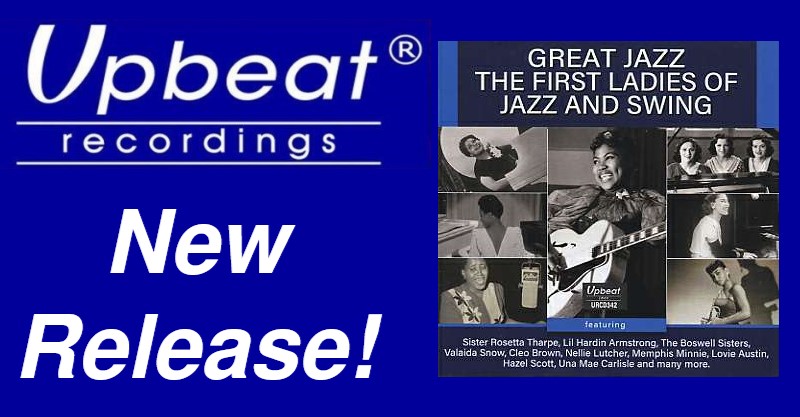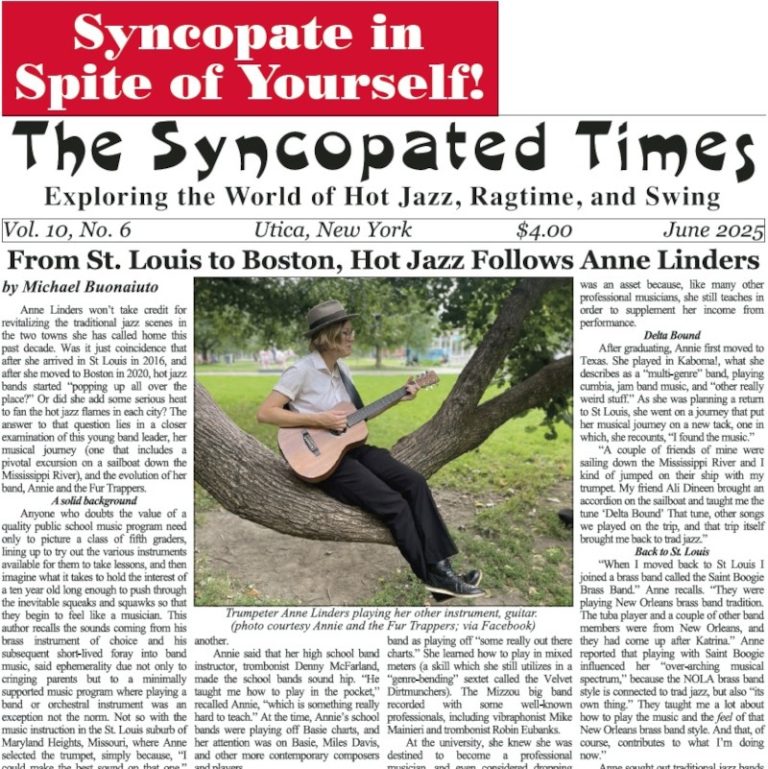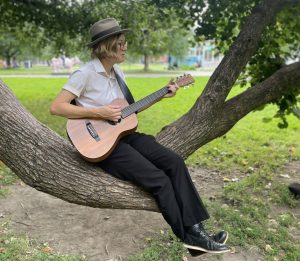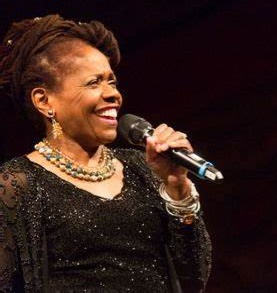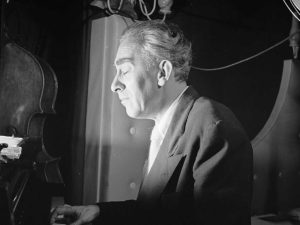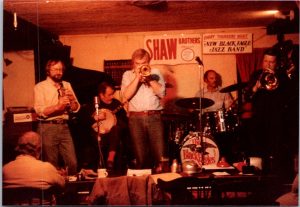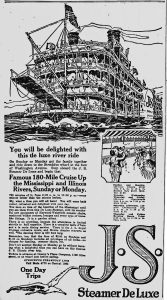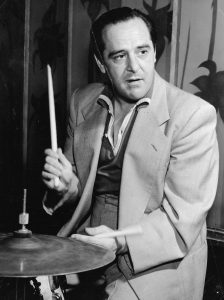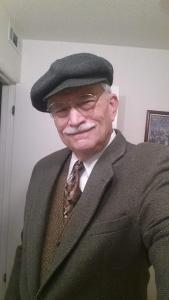 One can’t imagine the vintage music scene today without the influence of Don Neely, the founder of the long-running Royal Society Jazz Orchestra. The California-based bandleader, multi-instrumentalist, vocalist, and composer has more than 40 years of musical experience playing tunes from the 1920s and 1930s. He expanded the audience for hot syncopated music beyond the Bay area without sacrificing authenticity. Dapper Don, with his silver hair and mustache making him look like the elder statesman he has become, still performs around California with other bands and his own 11-piece Royal Jazz Society Orchestra.
One can’t imagine the vintage music scene today without the influence of Don Neely, the founder of the long-running Royal Society Jazz Orchestra. The California-based bandleader, multi-instrumentalist, vocalist, and composer has more than 40 years of musical experience playing tunes from the 1920s and 1930s. He expanded the audience for hot syncopated music beyond the Bay area without sacrificing authenticity. Dapper Don, with his silver hair and mustache making him look like the elder statesman he has become, still performs around California with other bands and his own 11-piece Royal Jazz Society Orchestra.
At 67, Neely recalls the early days of the RSJO, where he found his audience for retro big-band music when everyone else was listening to jazz-rock or disco. He credits his grandmother for introducing him as a child to the music of such 1930s jazz greats as Fats Waller and Teddy Wilson. She would play stride piano on her living room piano. As is the custom, Neely first played classical piano music he learned in lessons that he began at a young age. The Beatles also swept the nation at that time but Beatlemania held no interest for Neely. Instead of listening to rock, he just unearthed vintage 78 rpm records at a local Goodwill store.
“I discovered I really like Victor records,” Neely says. “One of the first records I bought was Paul Whiteman playing ‘Whispering’ which was a very common record to find. It struck a chord with me. I enjoyed this music because it was more similar to classical music than what I heard in the pop music scene.” It also set the teenage Neely on a life-long path that would take him from the phonograph to the performance stage.
At his boyhood home in rural Hollister, CA, Neely dreamt of having his own band, but figured it wouldn’t be possible. He also assumed all of the musicians he listened to on those scratchy shellac discs, were dead. Only later would Neely learn that guys like Whiteman were still among the living. In high school, his interest in old-time music waned but he still played in the school band. Neely had all but forgotten about the hobby of his youth as he moved on to junior college. Then, it seemed the universe conspired to send him back to the past.
First, Neely saw Woody Allen’s 1972 comedy Everything You Always Wanted to Know About Sex. Allen, himself a devotee of ragtime and trad jazz, used the 1928 hit version of “Let’s Misbehave,” by Irving Aaronson and his Commanders, as its theme song. Neely says hearing that song “kicked me off again and I discovered LP re-issues of these recordings and started collecting them.”
Then, Disneyland entered the picture. Neely auditioned for a three-month summer program where he could play music. Though he performed “modern” stage band music, his job allowed him to soak up authentic vintage music performed by musicians like the Dapper Dans, a vocal group, and pianist Rod Miller, dubbed the “master of Disneyland ragtime music.”
In his second to last semester at San Jose State, Neely’s roommate formed a big band and used old jazz charts found at the public library. Neely had no idea such gems were just there for the asking. He also met a bandleader who shared with Neely his big collection of arrangements from the teens and ’20s. These discoveries prompted him to fulfill his boyhood dream of forming his own big band.
“I actually took out a bank loan of $2,000 to copy these arrangements and that’s how I started my initial collection. I had a number of friends in the music department and I told them what I wanted to do. We all kind of learned together. I was familiar with the music but did not know the minutiae. It was a learning experience—we rehearsed twice a week when we first started out. I’d put on records and we all would listen,” Neely recalls.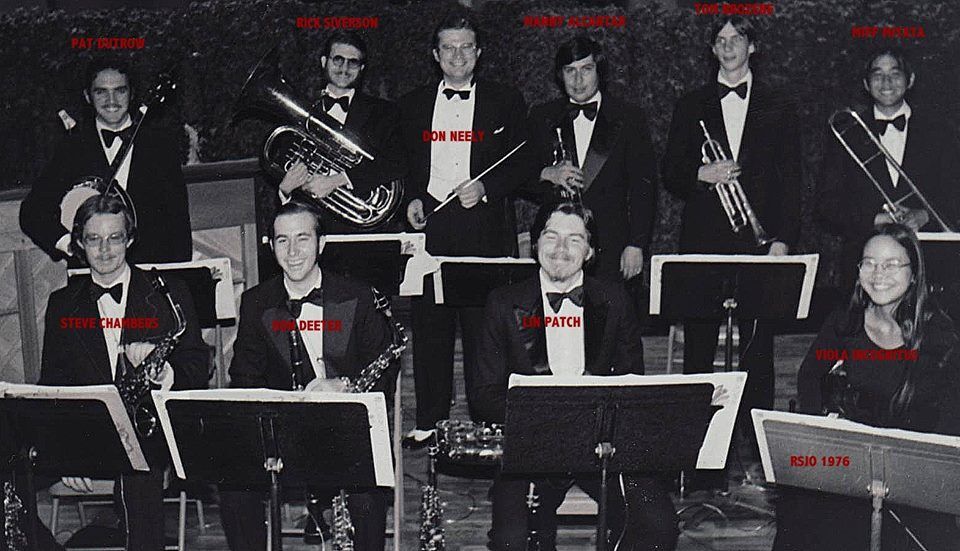
Following graduation in 1976, Neely began practicing full time with his band, now called the Royal Society Dance Orchestra. He created the name after reviewing the names of other bands in discography books written by Brian Rust. The change from “dance” to “jazz” would come later, when they were invited to play the Sacramento Jazz Festival in 1977. It’s a name now known by jazz fans around the world but Neely wishes he had never chosen it.
“I’ve regretted it ever since because it sounds so pretentious,” Neely says. “We played in London and they wanted to know what ‘Royal Society’ meant. I even hadn’t heard of the Royal Society. I told them we have Royal Crown Cola and that doesn’t mean anything. It’s also too long to say and to fit on a marque. But I’m stuck with it.”
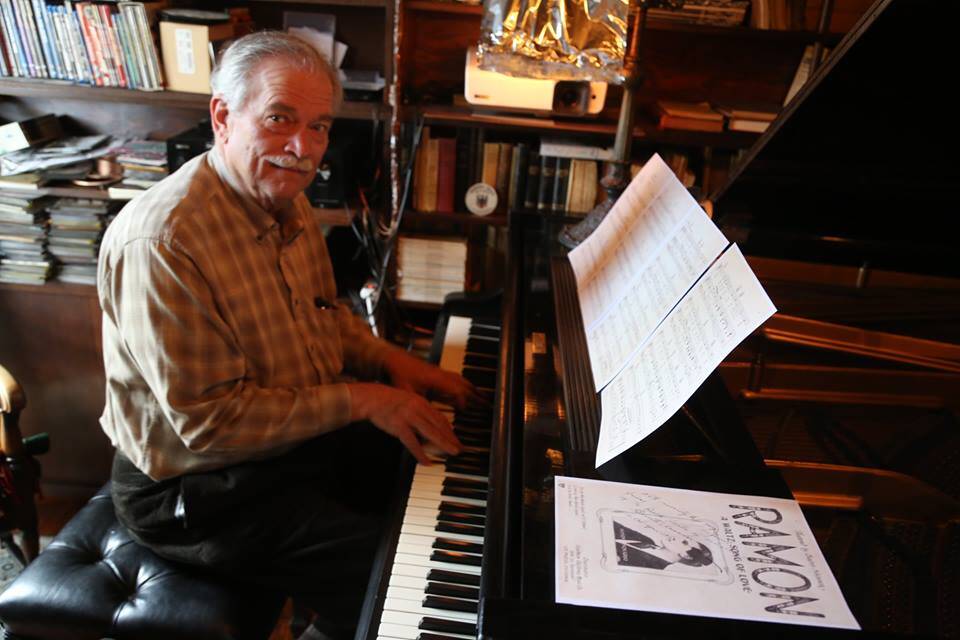
A San Jose pizza parlor accommodated the band by offering them a place to play and rehearse. It led to their first job—the opening of a Bullock’s department store. Word of the band began to spread and they were hired to open for the Don Menza Quartet at the Flint Center for the Performing Arts in Cupertino, CA. At this time, Neely strictly played only music from 1919-1927 which apparently only the audience loved.
“We were the warm up act and we got a standing ovation,” Neely says. “We brought down the house. I go backstage and Menza is furious. ‘What is this shit?’ he screamed.”
Not every performance received such a warm reception from the audience. The band’s first New Year’s Eve party in Gilroy, CA, collided with Neely’s dogmatic adherence to 1920s music. A friend had sold the Elk’s Club on hiring Neely by telling them he played tunes like “It Had to Be You” and “My Blue Heaven.”
“The thing was,” Neely explains, “we were playing the 1924 version of ‘It Had to Be You’ and the 1928 version of ‘My Blue Heaven.’ We start playing and the people just absolutely hated us. The bartender yells at me ‘you gotta play what the people want!’ I said I was sorry but we don’t and everyone left. The party was over before midnight. I thought everyone would love the music. Obviously, Gilroy wasn’t the place for that music.”
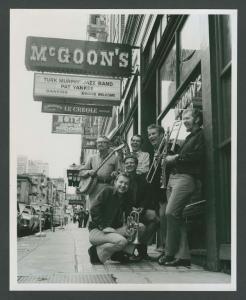
However, he felt nearby San Francisco, a big city with more cultured audiences, might be a better venue for the band. They landed at the famous trad jazz club Earthquake McGoon’s, owned and operated by Turk Murphy, a Dixieland and trad jazz trombonist and bandleader, playing Sunday afternoons for audiences who still remembered the 1920s. Neely says the audiences loved the band’s youth and attention to detail, right down to the wing collars on their tuxedo shirts and vintage music stands.
Enter a young pianist named Peter Mintun, who already had made a name for himself in the Bay area by authentically playing classic pre-war jazz and dance tunes.
“I worked five nights a week which made it hard for me to find time to hear them,” Mintun says. “Finally, I heard them at a garden party hosted by a mutual friend and I was so bowled over. First off, they were all in their 20s or early 30s and they played really hard to play arrangements from that period with great verve, alacrity, and style. One of the other main things was their enthusiasm. I thought they should be better known.”
Mintun began spreading the gospel of the Royal Society Jazz Orchestra to all corners of San Francisco. He lent his name, and talent, to a 1981 Mother’s Day tea dance at Earthquake McGoon’s and badgered Herb Caen, a journalist with the San Francisco Chronicle, to mention the band in his popular society column because, as Mintun remembers, “if you got in Herb Caen’s column, you really had a foot in the door as far as publicity.”
“It was a dark club and here on this beautiful Mother’s Day from 2 pm to 6 pm, we had enough people there, some dressed in 1920s and ’30s outfits, that it was lots of fun. Caen and his girlfriend arrived during this tea dance and had a good time. Three days later he wrote about the band in his column. You have to create a following and teach people how great it was,” Mintun says.
Neely also remembers the influence and support given to the RJSO from David Fowler, an area TV and radio broadcaster, and Ellen Farmer, the group’s first manager.
Fowler, as a producer on KALW-FM, located on Treasure Island in San Francisco Bay, helped record the RSJO and play the recordings on the radio in 1983. “The equipment was all vintage, Neely says, “they had music stands and ribbon microphones. We’d go record at a high school in the Mission District and he would put us on the air. Here was a station that had no ratings and pretty soon they started getting ratings! I could walk down Market Street and hear my music coming out of stores.”
Farmer, not only helped with the business side of running a band, but she also introduced Neely to singer Carla Normand. She made a big difference in both the RSJO and Neely’s personal life in 1983.
“I said I didn’t want a singer and didn’t need a singer. Not only did I agree to hear her but I fell in love with her. We got married. It did cause some problems with the band. It had been a boy’s club and it ultimately broke up the band,” Neely says.
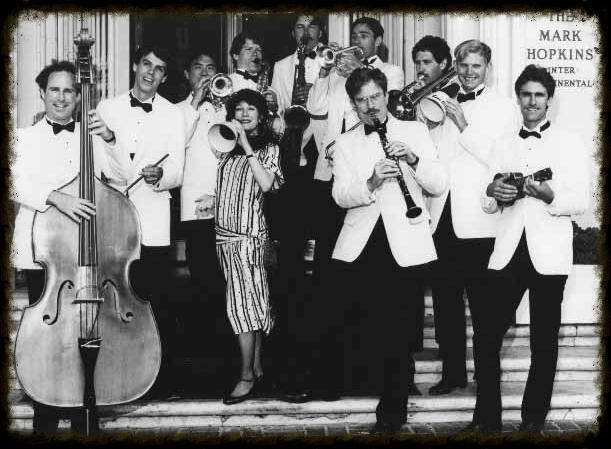
The band, he admits, was also heading in different directions as their fame began spreading from Earthquake McGoon’s to high toned places like Nob Hill, the Peacock Court, and the Mark Hopkins Hotel. Neely’s musical tastes were also expanding to songs of the 1930s, like “Cheek to Cheek,” that Normand loves to sing. He adds that his musical interests now range from 1920 to 1935.
By the mid-1980s, Neely and a reconstituted RSJO were playing 3 gigs a week—a career highpoint—which included public concerts, private parties, and corporate events. By 2000, however, bookings slowed down as it became more and more expensive to hire an 11-piece band. Besides the work, Neely also slowed down and started smaller units like Don Neely’s Swingtet, for swing dances, and Neely’s Rhythm Aces, for traditional jazz clubs. The RSJO, after all, had nothing more to prove. It became an established name having played thousands of concerts and recorded 17 albums beginning with Don Neely’s Royal Society Jazz Orchestra Plays Hot Jazz of the 1920s (1978). Neely also wrote about 40 original songs in a 1920s style which were featured on the albums Déjà vu and Jump Start. The songs sounded authentic enough to even fool music experts.
Of course, there are a slew of talented musicians who have played with and for Neely over the past 40 years. Longtime RSJO pianist Frederick Hodges says Neely is “exceedingly generous and patient” with his sidemen.
“Even though I was passionate about the wonderful dance band recordings of the 1920s and 1930s, I really knew nothing about the art of playing in a band,” Hodges tells TST. “Don was an excellent teacher. He taught me how to play in an ensemble, how to solo within an orchestral arrangement, how to accompany other soloists, and eventually how to sing with an orchestra. He could easily have found someone with more skill than I, but he was willing to give me a chance and he allowed me to learn on the job. I am extremely grateful to him for this and for so much more.”
The RSJO’s influence can also be heard and seen all over today’s music scene, from Dean Mora, a bandleader who fronts the pan-period “Dean Mora Orchestra” and “Mora’s Modern Rhythmists” in Los Angeles, to the United Kingdom where 29-year-old Alex Mendham bandleader founded the London-based revivalist “Alex Mendham & His Orchestra.” Mendham met Neely at the Gatsby Summer Afternoon in Oakland, CA, an event the RSJO has regularly played for the past 40 years.
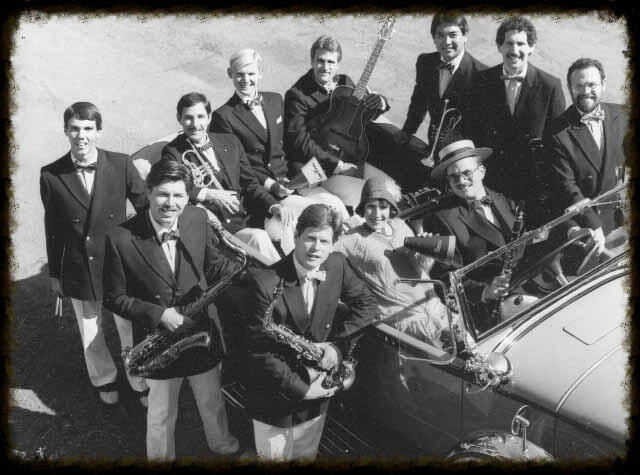
“When I became interested in the idea of recreating pop and jazz music of the 1920s and 1930s, there were really only two points of reference for authentic recreations and both were from the US— Vince (Giordano) and Don. For me, they both represented different things that I was trying to recapture. Vince had the hot jazz and Don’s band encapsulated the joie de vivre of the early ’30s dance bands of Gus Arnheim and Jimmie Grier, especially when Frederick Hodges took to the microphone for a vocal,” Mendham says.
It seems the baton has been passed to a younger generation of bandleaders. These young musicians look to Neely for inspiration on how to authentically honor the music of the past. Peter Mintun believes Neely is okay with his new role.
“When we were in our 20s and 30s, we looked up to the veterans before us like pianist Wally Rose, trombonist Turk Murphy, and Lu Watters’ Yerba Buena Jazz Band in San Francisco,” Mintun says. “They were the elder statesmen for people like us. However, now it’s just the other way around where Don is invited to be featured with a band of twenty-something musicians. People hire him to guest star with bands in various cities. So now he’s the elder statesman and I know he’s really enjoying it.”
In turn, Neely expresses his gratitude for what the music world has given him. “I just want to thank everyone who’s helped us along the way, and our fans, I really appreciate them. I would also like to give special thanks and gratitude to Carla Normand. Without her encouragement and assistance, I would never have persevered as a bandleader. As a result of Carla’s influence, after nearly 45 years, the band is still performing and still making people happy.”
You can learn more about the Royal Society Jazz Orchestra, and order CDs, at www.rsjo.com.
Brian R. Sheridan, MA, is the chair of the Communication Department at Mercyhurst University in Erie, PA (hometown of Ish Kabibble) and a longtime journalist in broadcast and print. He also co-authored the book America in the Thirties published by Syracuse University Press. Sheridan can be reached at bsheridan@mercyhurst.edu. Find him on Twitter @briansheridan and Instagram at brianrsheridan.




